Saman, M; Helman, S. N; Kadakia, S; Naymagon, L.
Journal of Plastic, Reconstructive & Aesthetic Surgery, 2015-01-01, Volúmen 68, Número 1, Pages 87-92
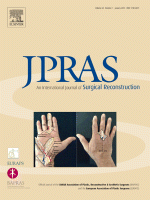 Rhinoplasty is considered one of the most commonly performed and most challenging operations in facial plastic surgery. The modern facial plastic surgeon utilizes many instruments in performing this procedure. Many of these instruments take their names from the pioneers who invented or designed them. Although meritorious, the recent trend in medicine to move away from eponyms in lieu of descriptive names should not come at the price of forgetting history. Although this communication does not seek to provide a comprehensive history of rhinoplasty or of its pioneers, our aim is to mention several of the salient contributing figures upon whose shoulders we stand and whose eponymous instruments we use commonly in rhinoplasty.
Rhinoplasty is considered one of the most commonly performed and most challenging operations in facial plastic surgery. The modern facial plastic surgeon utilizes many instruments in performing this procedure. Many of these instruments take their names from the pioneers who invented or designed them. Although meritorious, the recent trend in medicine to move away from eponyms in lieu of descriptive names should not come at the price of forgetting history. Although this communication does not seek to provide a comprehensive history of rhinoplasty or of its pioneers, our aim is to mention several of the salient contributing figures upon whose shoulders we stand and whose eponymous instruments we use commonly in rhinoplasty.

 Pinna deformities, combined with congenital aural atresia, have been a matter of serious debate in the literature as they are associated with major aesthetic and functional problems that are difficult to manage. These problems have been described as early as 2000 BC. The aim of the present article is to approach the whole problem as one (pinna malformation and aural atresia) and present the history as well as the current approaches in reconstruction.
Pinna deformities, combined with congenital aural atresia, have been a matter of serious debate in the literature as they are associated with major aesthetic and functional problems that are difficult to manage. These problems have been described as early as 2000 BC. The aim of the present article is to approach the whole problem as one (pinna malformation and aural atresia) and present the history as well as the current approaches in reconstruction.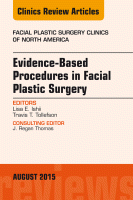 Systematic reviews and meta-analyses hold a unique position in the pyramid of evidence. They can provide transparent and rigorous summaries to answer many clinical questions in facial plastic surgery. They can also identify areas of research deficiency, create new knowledge, and support guidelines or policies. A well-conducted systematic review follows a structured process to minimize bias and ensure reproducibility. When appropriate, a meta-analysis is incorporated to provide a statistical synthesis that combines the results of individual studies. This powerful quantitative method is becoming more prevalent in facial plastic surgery. This article provides a practical framework to understand and conduct this valuable type of research.
Systematic reviews and meta-analyses hold a unique position in the pyramid of evidence. They can provide transparent and rigorous summaries to answer many clinical questions in facial plastic surgery. They can also identify areas of research deficiency, create new knowledge, and support guidelines or policies. A well-conducted systematic review follows a structured process to minimize bias and ensure reproducibility. When appropriate, a meta-analysis is incorporated to provide a statistical synthesis that combines the results of individual studies. This powerful quantitative method is becoming more prevalent in facial plastic surgery. This article provides a practical framework to understand and conduct this valuable type of research.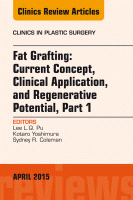 Simultaneous breast augmentation and mastopexy is a common procedure often considered to be one of the most difficult cosmetic breast surgeries. One-stage augmentation mastopexy was initially described more than 50 years ago. The challenge lies in the fact that the surgery has multiple opposing goals: to increasing the volume of a breast, enhance the shape, and simultaneously decrease the skin envelope. Successful outcomes in augmentation can be expected with proper planning, technique, and patient education. This article focuses on common indications for simultaneous augmentation mastopexy, techniques for safe and effective combined procedures, challenges of the procedure, and potential complications.
Simultaneous breast augmentation and mastopexy is a common procedure often considered to be one of the most difficult cosmetic breast surgeries. One-stage augmentation mastopexy was initially described more than 50 years ago. The challenge lies in the fact that the surgery has multiple opposing goals: to increasing the volume of a breast, enhance the shape, and simultaneously decrease the skin envelope. Successful outcomes in augmentation can be expected with proper planning, technique, and patient education. This article focuses on common indications for simultaneous augmentation mastopexy, techniques for safe and effective combined procedures, challenges of the procedure, and potential complications. Nowadays, most patients with severe burns will survive their injury. This evolution is accompanied by the challenge to cover a large percentage of total body surface area burned. Consequently, more and more patients have to deal with the sequelae of burn scars and require (multiple) reconstructions. This review provides a gross overview of developments in the field of tissue engineering for permanent burn wound coverage and reconstructive burn surgery, focusing on usage and clinical effectiveness. Not only skin substitutes will be discussed but also the replacement of subcutaneous fat tissue and cartilage.
Nowadays, most patients with severe burns will survive their injury. This evolution is accompanied by the challenge to cover a large percentage of total body surface area burned. Consequently, more and more patients have to deal with the sequelae of burn scars and require (multiple) reconstructions. This review provides a gross overview of developments in the field of tissue engineering for permanent burn wound coverage and reconstructive burn surgery, focusing on usage and clinical effectiveness. Not only skin substitutes will be discussed but also the replacement of subcutaneous fat tissue and cartilage.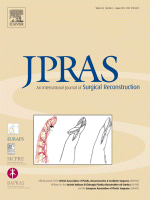 Nowadays, as in the past, much attention is paid to aesthetic operations in women, while only infrequently have such operations been referred to in males. Generally, male aesthetic surgery was introduced to surgical practise during the 19th century. In this study, we analysed the practise of such operations in Byzantine times and in other ancient cultures with surgical knowledge, i.e. ancient India and China.
Nowadays, as in the past, much attention is paid to aesthetic operations in women, while only infrequently have such operations been referred to in males. Generally, male aesthetic surgery was introduced to surgical practise during the 19th century. In this study, we analysed the practise of such operations in Byzantine times and in other ancient cultures with surgical knowledge, i.e. ancient India and China. Evidence-based medicine (EBM) is being embraced by plastic surgery. Patient values are combined with scientific data to complement a plastic surgeon’s clinical experience. However, because scientific data are difficult to distill from the aesthetic literature, there are significant challenges to integrating EBM principles into the art of aesthetic surgery. The primary dilemmas are to define the desired goals of aesthetic surgery and determine how outcomes can be measured; these challenges still face this subspecialty of plastic surgery. The article presents an objective view of evidence – based medicine application to aesthetic surgery. The challenges are discussed and the points that create them are analyzed. Psychological and external factors in decision-making for aesthetic surgery are presented. The handling of surgical complications is presented as an example affecting reporting of outcomes.
Evidence-based medicine (EBM) is being embraced by plastic surgery. Patient values are combined with scientific data to complement a plastic surgeon’s clinical experience. However, because scientific data are difficult to distill from the aesthetic literature, there are significant challenges to integrating EBM principles into the art of aesthetic surgery. The primary dilemmas are to define the desired goals of aesthetic surgery and determine how outcomes can be measured; these challenges still face this subspecialty of plastic surgery. The article presents an objective view of evidence – based medicine application to aesthetic surgery. The challenges are discussed and the points that create them are analyzed. Psychological and external factors in decision-making for aesthetic surgery are presented. The handling of surgical complications is presented as an example affecting reporting of outcomes.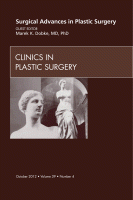 Invasive and noninvasive plastic surgical procedures have undergone exponential growth over the last 30 years, due in part to an expansion of extensive basic and clinical research. The purpose of this article is to examine how plastic surgeons learn to use novel technology in their practices. In addition, a critical evaluation of current teaching methods as they relate to surgeon competence in these new technologies is discussed. Mention of specific technologies is done for demonstrative purposes to illustrate how practitioners of plastic surgery gain competence in their safe and effective use.
Invasive and noninvasive plastic surgical procedures have undergone exponential growth over the last 30 years, due in part to an expansion of extensive basic and clinical research. The purpose of this article is to examine how plastic surgeons learn to use novel technology in their practices. In addition, a critical evaluation of current teaching methods as they relate to surgeon competence in these new technologies is discussed. Mention of specific technologies is done for demonstrative purposes to illustrate how practitioners of plastic surgery gain competence in their safe and effective use.






 Sitio web publicado el
Sitio web publicado el
Los lectores comentan